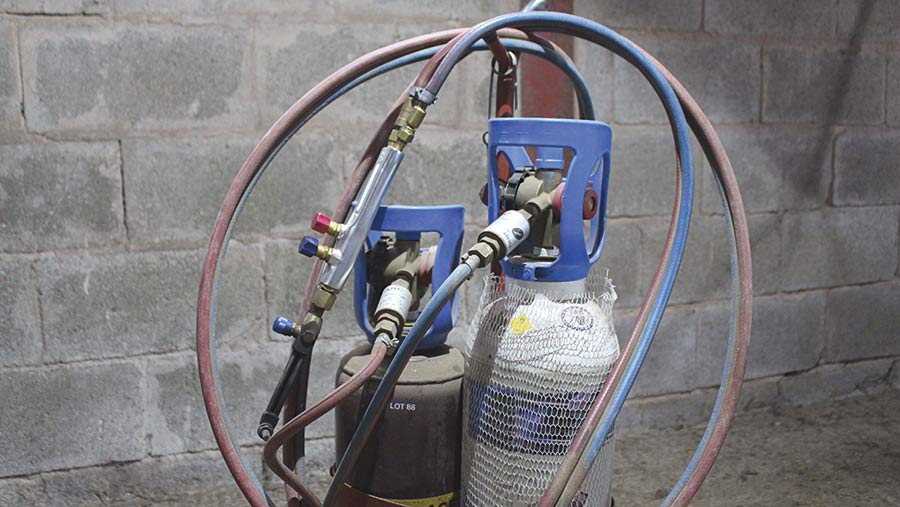Workshop tips: A guide to oxy acetylene gas cutting and welding
 © James Andrews
© James Andrews Having spent more than 35 years teaching the agricultural fraternity to weld, Derbyshire farmer Richard Archer knows a thing or to about joining bits of metal together.
His welding career started in the mid 1970s, patching up equipment on the family dairy farm.
That led him to train for a further two years to obtain City and Guilds welding qualifications, before starting to teach other people the craft in 1980.
See also: Six best-selling impact drivers on test
Since then he’s taught hundreds of farmers and farm workers to weld through a series of college courses and on-farm courses with the former Agricultural Training Board and now Lantra.
He also acts as an External Quality Assurer for City and Guilds at agricultural training centres and colleges and presents at HSE Safety Awareness Events around the country.
See Richard Archer’s other workshop tips:

Richard Archer © James Andrews
Archer’s advice – Oxy acetylene
Few farm workshops are complete without a set of gas bottles. But while most get used for hacking through rusty bolts and bending twisted kit back into shape, there are plenty of techniques to get a bit more out of them.
Cutting cleanly
If you want to perform a clean cut through a piece of steel, the first thing to make sure is that it’s free from rust.
Oxy acetylene can’t cut through rust, so when the oxygen hits the rust layer on the underside of the steel it will bounce back giving you a poor quality cut. Using the correct nozzle size will also make a big difference to the quality of the cut.
However, if you’re only planning to use your gas for cutting and heating, consider switching to propane as it’s a much safer gas to work with and the results are just as good.
Welding
Sadly, welding and brazing with oxy acetylene gas is a bit of a dying art, with more bigger farm workshops moving to MIG and TIG. However, it can give very good results, particularly on thinner materials.
If you do want to do it, make sure you use a good welding torch and have a selection of nozzles to match the thickness of the steel, and take your time.
You should always work with a molten pool of metal and keep dipping the welding rod into this as you move across the work. Don’t melt the rod with the flame.
Another tip is to fold the cold end of the wire over so you don’t poke yourself or anyone else in the eye. It also means you’re less likely to pick up the hot end.
Oxy-acetylene can be dangerous and anyone using it should receive training in its safe use. You should also always fit flashback arrestors and hose check valves to prevent the flame travelling back to the cylinders. Oxy acetylene equipment should be regularly checked, and serviced or replaced as required.

